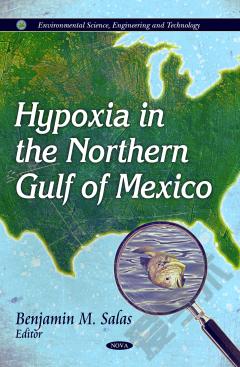Hypoxia in the Northern Gulf of Mexico
Since 1985, scientists have been documenting a hypoxic zone in the Gulf of Mexico each year. The hypoxic zone, an area of low dissolved oxygen that cannot support marine life, generally manifests itself in the spring. Since marine species either die or flee the hypoxic zone, the spread of hypoxia reduces the available habitat for marine species, which are important for the ecosystem as well as commercial and recreational fishing in the Gulf. Since 2001, the hypoxic zone has averaged 16,500 km{sup 2} during its peak summer months, an area slightly larger than the state of Connecticut, and ranged from a low of 8,500 km{sup 2} to a high of 22,000 km{sup 2}. To address the hypoxia problem, the Mississippi River/Gulf of Mexico Watershed Nutrient Task Force (or Task Force) was formed to bring together representatives from federal agencies, states, and tribes to consider options for responding to hypoxia. The Task Force asked the White House Office of Science and Technology Policy to conduct a scientific assessment of the causes and consequences of Gulf hypoxia through its Committee on Environment and Natural Resources (CENR). In 2000 the CENR completed An Integrated Assessment: Hypoxia in the Northern Gulf of Mexico (ormore » Integrated Assessment), which formed the scientific basis for the Task Force's Action Plan for Reducing, Mitigating, and Controlling Hypoxia in the Northern Gulf of Mexico (Action Plan, 2001). In its Action Plan, the Task Force pledged to implement ten management actions and to assess progress every 5 years. This reassessment would address the nutrient load reductions achieved, the responses of the hypoxic zone and associated water quality and habitat conditions, and economic and social effects. The Task Force began its reassessment in 2005. In 2006 as part of the reassessment, USEPA's Office of Water, on behalf of the Task Force, requested that the U.S. Environmental Protection Agency (USEPA) Science Advisory Board (SAB) convene an independent panel to evaluate the state-of-the-science regarding hypoxia in the Northern Gulf of Mexico and potential nutrient mitigation and control options in the Mississippi-Atchafalaya River basin (MARB). The Task Force was particularly interested in scientific advances since the Integrated Assessment and posed questions in three areas: characterization of hypoxia; nutrient fate, transport and sources; and the scientific basis for goals and management options. The Hypoxia Study Group began its deliberations in September of 2006 and completed its report in August of 2007 while operating under the 'sunshine' requirements of the Federal Advisory Committee Act, which include providing public access to advisory meetings and opportunities for public comment. This Executive Summary summarizes the Hypoxia Study Group's major findings and recommendations.« less
{{comment.content}}








 京公网安备 11010802027623号
京公网安备 11010802027623号